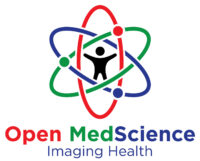Summary: The increasing environmental impact of healthcare services has placed greater responsibility on all areas of clinical practice, including radiography, to adopt more sustainable methods. As an essential part of diagnostic and interventional medicine, clinical radiography significantly contributes to energy consumption, waste production, and resource utilisation. This article explores how sustainability can be embedded into everyday radiographic practice, with a focus on operational processes, waste management, digital transformation, staff education, and broader systemic approaches. Practical strategies are discussed to enable departments and individual radiographers to reduce their environmental footprint without compromising the quality of patient care.
Keywords: Sustainability, Clinical Radiography, Healthcare Environment, Digital Imaging, Green Practices, Waste Reduction
The Environmental Impact of Radiographic Practice
Modern healthcare systems are under dual pressure: the need to deliver high-quality, accessible care and the need to operate within increasingly constrained environmental limits. In the UK, the NHS has committed to achieving net-zero emissions by 2045, and imaging services must play their part in this goal. Clinical radiography, encompassing X-ray, CT, MRI, fluoroscopy, and mammography, is energy-intensive and reliant on high-tech equipment and consumables. Consequently, the discipline must re-evaluate its practices and take steps to support environmental sustainability. This article outlines key areas where sustainability initiatives can be promoted within radiography departments, supported by current developments in healthcare policy, technology, and education.
Clinical radiography contributes to environmental degradation in several ways. Imaging equipment, particularly MRI and CT scanners, consumes significant amounts of electricity. For example, a single MRI machine can use as much power annually as a small residential street. Moreover, radiography relies on consumables such as contrast agents, protective clothing, single-use plastics, and, in some settings, physical film and paper documentation. While the industry has made strides in digitising image capture and reporting, some departments continue to produce unnecessary printed material or retain outdated workflows.
In addition to direct energy and material use, the procurement, maintenance, and disposal of imaging equipment incur notable environmental costs. The production of radiographic machines involves the extraction of rare materials and generates substantial carbon emissions. When equipment becomes obsolete, its disposal often generates electronic waste, which is challenging to recycle. Recognising these impacts is the first step towards meaningful change.
Improving Operational Sustainability in Radiography
Operational changes can have an immediate and measurable effect on the environmental performance of a radiography department. One of the most effective strategies is improving energy efficiency. Imaging equipment should be switched off when not in use, especially overnight or during long periods of inactivity. This can be achieved through programmed settings or manual routines, reinforced by staff awareness and departmental policy. Some manufacturers now offer systems with automated power-saving modes, which reduce energy draw during idle periods without affecting readiness.
Extending the life of radiographic equipment is also essential. A well-maintained scanner not only provides consistent image quality but also reduces the need for premature replacement, thereby lowering carbon emissions and financial cost. Regular servicing and prompt repair work support both environmental and operational resilience. In some cases, equipment that is no longer suitable for frontline use can be repurposed for training or used in less demanding clinical contexts, such as outpatient or community-based settings.
Radiography’s digital transformation offers another significant opportunity for sustainability. Electronic patient records, digital imaging platforms, and cloud-based reporting systems reduce the need for paper, film, and physical storage space. When utilised to their full potential, these technologies enable images and reports to be accessed remotely, reducing unnecessary patient travel and facilitating efficient workflows across hospital sites. Digital communication should replace printed materials wherever possible, with radiographers encouraged to use secure electronic channels for referral, documentation, and interdepartmental liaison.
Managing Waste and Optimising Resource Use
Healthcare generates large volumes of waste that require proper medical waste disposal, and radiography departments are no exception.
Proper waste segregation is crucial to ensuring that recyclable materials are not mistakenly disposed of as clinical waste, which is subject to more energy-intensive treatment. Staff should receive regular training on waste sorting procedures, particularly with regard to sharps, packaging, PPE, and contrast agent containers.
Visible and well-labelled bins should be readily accessible in both clinical and administrative areas to encourage correct disposal practices.
The overuse of single-use items is another problem that can be addressed without compromising safety or infection control. For example, many departments use disposable aprons, gowns, and lead shields that could be replaced with durable, washable alternatives. In low-risk, non-sterile environments, reusable equipment is often a viable option and can significantly reduce plastic waste. Departments should assess which items are used most frequently and whether reusable alternatives are clinically appropriate.
Contrast agents, particularly iodinated compounds used in CT imaging, can have environmental consequences if not managed properly. Their presence in wastewater has raised concerns about water pollution and ecological harm. Radiographers should be trained to administer only the minimum required volume of contrast, and departments should explore the use of closed-loop systems that limit waste. Collaborating with pharmacy and environmental teams can lead to the development of protocols for safe handling and disposal of contrast agents.
Building Staff Awareness and Embedding Education
Sustainability is most effective when it becomes a shared value rather than a top-down initiative. Radiography departments can support this cultural shift through education and staff engagement. Training programmes for new and existing staff should include content on environmental awareness, covering topics such as energy use, waste reduction, and sustainable procurement. Case studies and practical examples can help illustrate how small changes in practice can lead to significant environmental benefits.
Designating one or more staff members as sustainability leads can further drive progress. These individuals can take responsibility for identifying new opportunities for improvement, leading audits, and sharing updates on departmental performance. They can also serve as a link between clinical staff and hospital sustainability teams, ensuring that radiography remains part of broader organisational efforts.
Behavioural change is a key component of sustainable practice. Radiographers should be encouraged to challenge inefficient workflows, suggest improvements, and participate in green initiatives. A culture of open communication and continuous improvement will foster innovation and engagement throughout the entire team.
Policy, Procurement and System-Level Change
The drive for sustainability in healthcare must be supported by institutional policy and national regulation. The NHS’s “Delivering a Net Zero NHS” strategy provides a clear framework for embedding environmental goals into routine clinical operations. Radiography departments should align their activities with local sustainability strategies, contributing data to carbon audits and engaging in quality improvement projects. By doing so, they not only reduce their own environmental impact but also demonstrate leadership within the wider hospital setting.
Procurement practices can significantly influence a department’s carbon footprint. Sustainable procurement involves evaluating products not just on cost and clinical performance, but also on their environmental credentials. Suppliers should be asked to provide information on the carbon footprint of their products, their approach to packaging and transportation, and their policies regarding the disposal and recycling of equipment. Departments can also choose to work with manufacturers who are certified for environmental management under standards such as ISO 14001.
There is also an opportunity for greater collaboration across the radiographic community. Professional bodies and academic institutions can support the development of national standards for sustainable imaging, host forums for sharing best practice, and fund research into low-carbon radiography. By working together, departments across the UK and beyond can establish a shared knowledge base that benefits both the profession and the planet.
Innovation and Future Opportunities
Technological innovation will play a significant role in shaping the future of sustainable radiography. New imaging systems are being developed with a focus on energy efficiency, using advanced cooling systems, low-power electronics, and intelligent software to reduce electricity consumption. These systems are not only greener but can also reduce long-term operational costs. Portable digital radiography units, in particular, offer flexibility and efficiency with lower energy consumption, making them suitable for point-of-care use in various settings.
Artificial intelligence (AI) is another area with the potential to enhance sustainability. AI can improve image acquisition, reduce the need for repeat scans, and assist in optimising imaging protocols. By streamlining workflows and identifying the most appropriate imaging strategies, AI tools can reduce both patient exposure and resource consumption. When integrated into radiology information systems, AI can also help departments analyse their own environmental performance and identify areas for improvement.
Carbon footprinting tools designed specifically for the healthcare sector are becoming increasingly available. These tools can track the emissions associated with imaging procedures, helping departments to make informed decisions about resource allocation and environmental priorities. As reporting becomes more standardised, departments will be better able to compare performance, set targets, and communicate progress to stakeholders.
Conclusion
Clinical radiography is essential to modern healthcare, but it must evolve to meet the challenges of environmental sustainability. By implementing practical changes to energy usage, waste management, and equipment procurement and maintenance, radiography departments can significantly reduce their environmental footprint. Education, staff engagement, and alignment with national policy are also key enablers of change. The integration of digital tools, AI, and new technologies will support these efforts, creating opportunities for innovation and continuous improvement. In embracing sustainability, radiographers can ensure that their work contributes not only to patient health but also to the health of the planet.
Disclaimer
The content of this article is intended for informational purposes only and does not constitute professional advice, guidance, or recommendations. While every effort has been made to ensure the accuracy of the information provided, Open Medscience and the authors accept no responsibility or liability for any actions taken based on the material presented. Readers are advised to consult appropriate clinical, regulatory, or environmental professionals before implementing any changes to practice. Any views or opinions expressed are those of the authors and do not necessarily reflect the official policy or position of any affiliated institutions or organisations. Mention of specific products, services, or manufacturers does not imply endorsement. The environmental strategies and technologies described in this article may vary in applicability depending on local policies, infrastructure, and clinical contexts.
You are here: home » diagnostic medical imaging blog »



